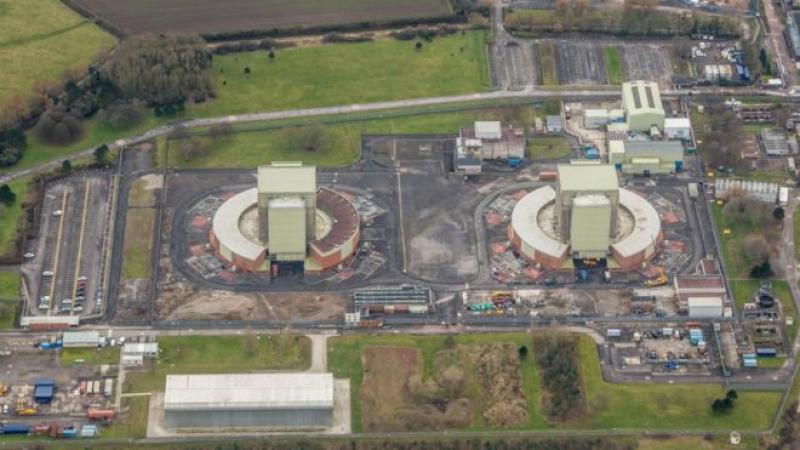
Work has begun on removing nuclear waste from Berkeley power station, 30 years after it was decommissioned.
The disused Magnox generator, situated on the banks of the River Severn in Gloucestershire, closed in 1989.
It was the world's first commercial nuclear power station and its laboratories and many of its buildings have already been dismantled.
Work emptying its vast concrete vaults of the nuclear waste Berkeley generated is only now able to safely begin.
But it will not be safe for humans to go inside its reactor cores until 2074.
The BBC has been given a rare glimpse of what is stored under the disused site.
Image copyrightBBCImage captionThe estimated cost of decommissioning of Berkeley is £1.2bn
For the past 50 years parts of the coastline of the west of England have been dominated by nuclear power stations.
The 1960s saw the construction of Hinkley A and Hinkley B in Somerset, with both Oldbury and Berkeley built on the banks of the River Severn in the 1950s.
Only Hinkley B is still in use but the nuclear waste the stations generated has remained in place.
It takes hundreds of years to decompose and has to be stored underground.
It will cost an estimated £1.2bn to fully decommission Berkeley.
About 200 people are currently working on the site under strict security.
Work emptying waste products from the concrete vaults, eight metres (26ft) underground, is a complicated process.
They contain used graphite from the fuel elements in the nuclear generating process, material from the cooling ponds and from the laboratories.
The removal is expected to take five or six years to complete.
Image captionRob Ledger, waste operations director at Berkeley, said: "When the power stations first started generating I don't think there was much thought put into how the waste was going to be dealt with or retrieved.
"It's taken a while to develop the equipment and the facilities [to do this].
"A mechanical arm moves the debris into position and then a 'grab' comes down through an aperture in the vaults and picks up the debris [and] puts it into a tray.
"Each debris-filled tray weighs up to 100kg (220lb).
"The automated machinery is controlled by computers [and] tips [the waste] into a cast iron container."
Image copyrightMAGNOXImage captionThe containers will house the waste in an intermediate storage facility until a long-term solution can be found.
"Nuclear waste does take a long time to decay... it's hundreds of years. And that's why we have to go to these lengths, to store it safely," said Mr Ledger.
Eventually the boxes will be housed deep underground in a long-term storage facility. The location has not yet been decided by the government.
Image copyrightMAGNOXImage captionThere are currently estimated to be almost 95,000 tonnes of nuclear waste in the form of graphite blocks across the UK.
But if the Carbon 14 can be extracted from the blocks, they become much safer and easier to deal with.
A new process is being explored, by scientists at Bristol University, to ensure not all of the waste will be discarded.
They have developed a process that uses reactor core spent contents in a new power form.
Carbon 14 from nuclear reactors is infused into wafer-thin diamonds, man-made in a lab at Bristol University.
They then become radioactive and form the heart of a battery that would last for many thousands of years.